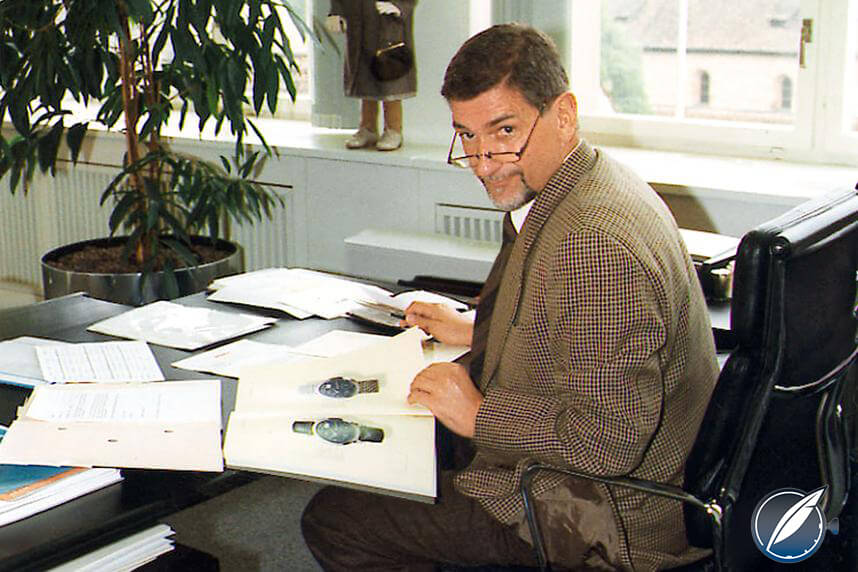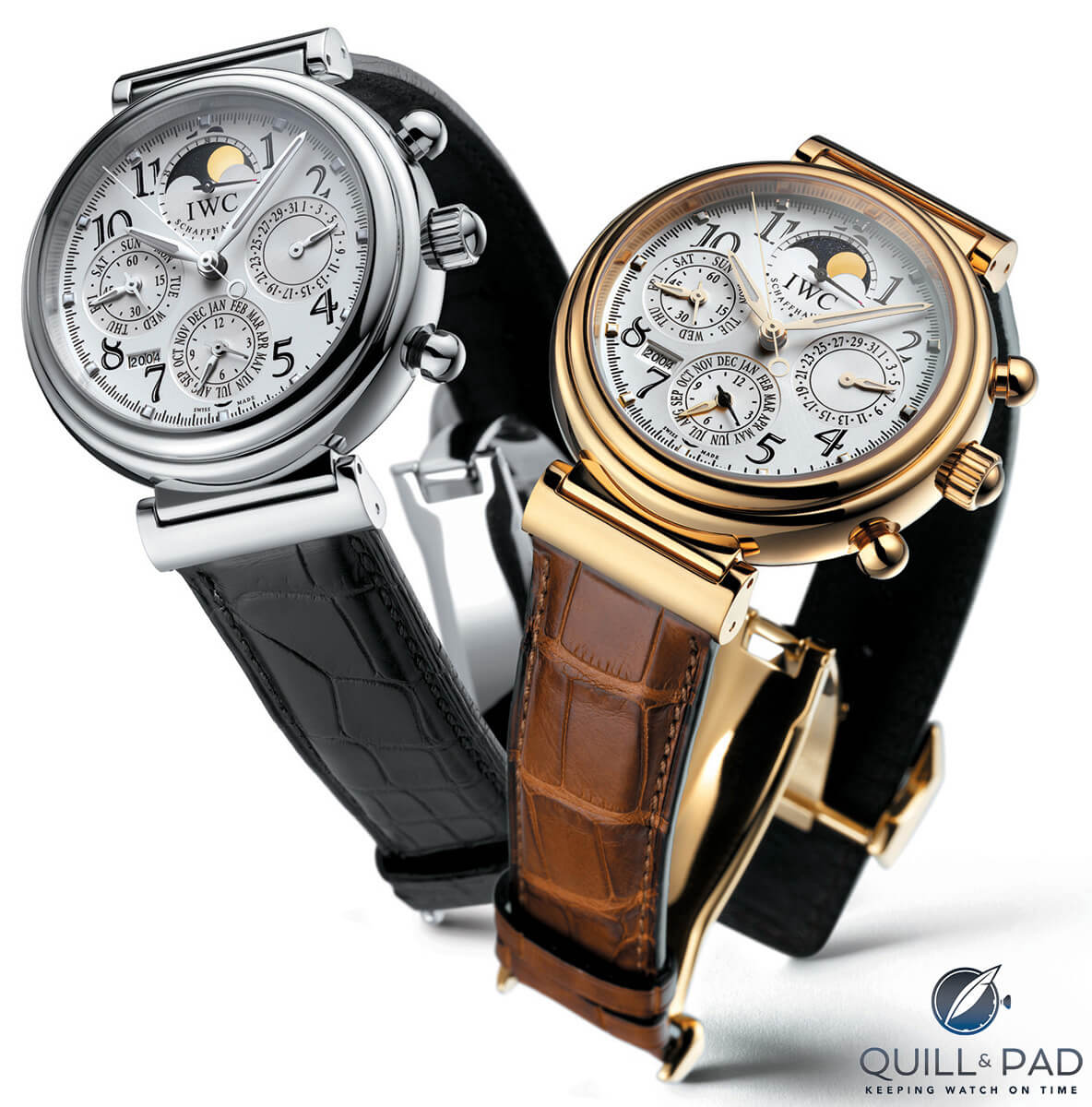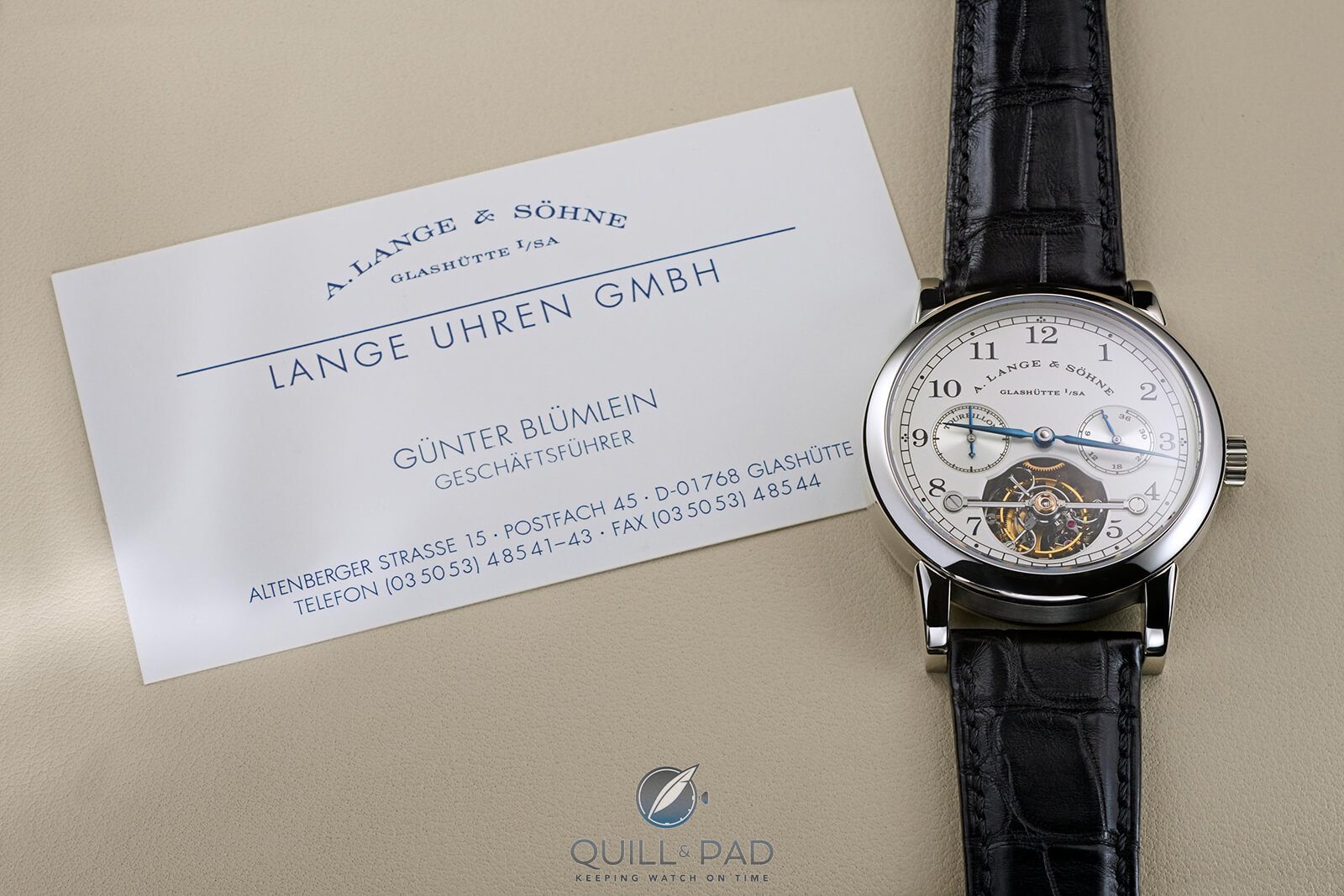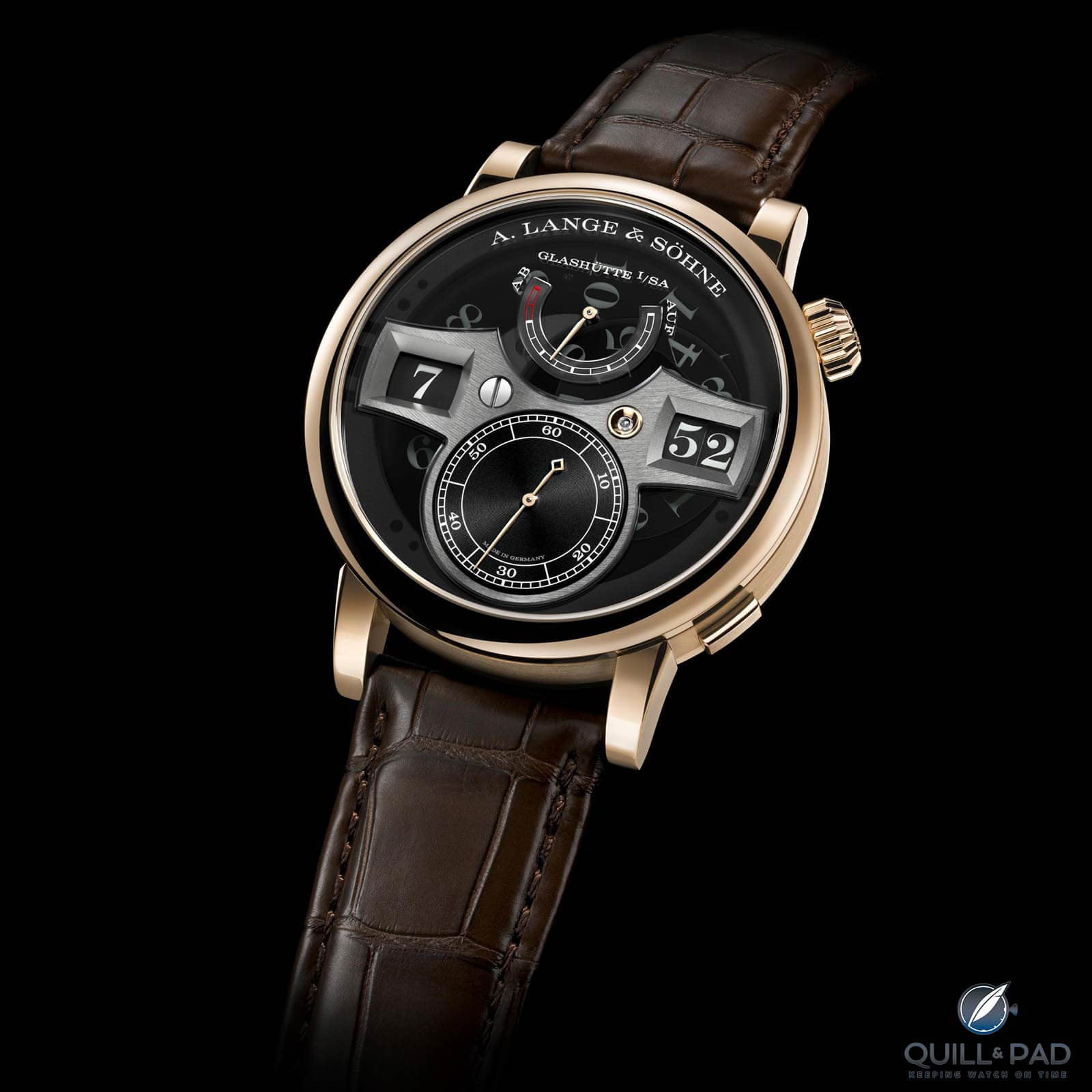A. Lange & Söhne launches the Zeitwerk Lumen in a limited edition Honeygold case on October 24, 2021. The brand’s own special gold alloy adds fresh appeal to one of Lange’s technically most complex pieces, and it’s a testament to placing the beauty of mechanics in the spotlight.

A. Lange & Söhne Zeitwerk Lumen Honeygold
There is a good reason why this Zeitwerk Lumen Honeygold was released on the 24th of October as an excursion into A. Lange & Söhne’s modern history reveals: the 24th and 25th are important dates in the 27-year history of the reborn brand.
A quick review of A. Lange & Söhne’s modern refounding
After the fall of the Berlin Wall and not long before German reunification, Walter Lange (1924–2017), the great-grandson of company founder Ferdinand Adolph Lange, was determined to restart the family business that had been closed by the communist government and integrated into a combine in former East Germany. Lange, a retiree in his late sixties at the time, set the date for the ambitious restart after more than 40 years of a compulsory break on the same day in December that Ferdinand Adolph Lange inaugurated his first watchmaker’s workshop 146 years ago: December 7.

Walter Lange and a bust of his great-grandfather Ferdinand Adolph in 2014
“December 7, 1990 is one of the most important days of my life. Back then, I re-registered the name Lange under a postal address I borrowed from a former classmate from school,” Walter Lange remembered during his lifetime. “It was a risk, but the only thing to do! I had to follow my family’s tradition by returning to Glashütte to restart making the best watches in the world. Just like my great-grandfather, I wanted to provide work and new prospects to the people of Glashütte during difficult times.”
The parallels in history are startling. As in 1845, the challenge could hardly have been greater. While Glashütte was an impoverished little town in an economically underdeveloped corner of Saxony when Ferdinand Adolph Lange built his first workshop, the modern goal was to return the technically outdated, uncompetitive, socialist-style mass production back to the high standard of precision watchmaking for which Glashütte once had been famous.
The period was marked by a spirit of optimism, but the challenge was enormous. Like almost all industrial sectors, the Glashütte watch and precision engineering industry combine, which during the time behind the Iron Curtain had been the largest employer in the region with approximately 2,500 staff, could not keep up with western competitors.
The legacy of the centrally planned economy proved to be difficult as did the decisive power of the West German government’s Treuhandanstalt, a trust agency that promoted rapid privatization solely from the point of view of profitability. It was not interested in sophisticated tradition of the old days.
The new political and economic order brought about major changes for Glashütte, where, as elsewhere in the former GDR, people were worried about mass unemployment and emigration. There was neither a playbook nor a guideline for Walter Lange’s ambitious goal – just the absolute will to build upon that which the expropriation had forced the family business to halt.

A. Lange & Söhne re-founders Günter Blümlein (left) and Walter Lange at the F.A. Lange memorial in Glashütte in 1991
There was another parallel of history. Like Ferdinand Adolph Lange, Walter Lange received strong support from some individuals who shared his vision, above all Günter Blümlein. At that time, the charismatic and visionary industry expert was the managing director of a holding company to which IWC Schaffhausen and Jaeger-LeCoultre already belonged.
Unlike many other players in the watch industry, Blümlein, who was born in Nuremberg in 1943, had no direct ties to watchmaking. Having grown up in Nuremberg during the era of the so-called Wirtschaftswunder (“economic miracle”), he had witnessed how the city, which had been almost destroyed during the war, grew into an important industrial hub with major companies settling in the Franconian metropolitan area. This may have prompted him to pursue studies in precision engineering.
In 1968 he started his career at Junghans, which was owned by the Diehl Group at that time. At the Black Forest-based brand, he learned the ABCs of the watchmaking world from the ground up. He was quick to climb up the career ladder and soon held senior positions in R&D, quality assurance, marketing, and sales.

Günter Blümlein at work in 2000
Subsequently, he went to Switzerland. The VDO Adolf Schindling AG, a German instrument maker that later became a Mannesmann subsidiary, entrusted him with the restructuring of IWC and Jaeger-LeCoultre. Both were combined in a holding called Les Manufactures Horlogères (LMH). Today, like A. Lange & Söhne, they are a part of the Richemont Group. As it was the case with most Swiss watch brands, the traditional firms had been severely battered by the quartz crisis, the high price of gold, and the strong Swiss franc.
While it may have appeared that the era of mechanical watches was over, Blümlein nevertheless believed in the great potential of conventional high-end watchmaking. Among other things, he encouraged IWC’s chief watchmaker Kurt Klaus to develop a complex new perpetual calendar. In 1985, the Da Vinci perpetual calendar made its debut at the Basel Fair. The ingenious calendar module requires no intervention by a watchmaker until the next secular year 2100 and can be easily adjusted via the crown.

The IWC DaVinci perpetual calendar in platinum and red gold
Under Blümlein’s leadership, IWC focused again on the production of mechanical timepieces and introduced some innovative materials into its collection. In 1980, the Schaffhausen-based brand presented its first wristwatch made of titanium and in 1986 the first made of black ceramic. The collaboration with industrial designer Ferdinand A. Porsche also resulted in a series of special timepieces: the first wristwatch with a built-in compass and the Ocean 2000, which is water resistant to 2,000 meters. With his leadership, expertise, and business acumen, Blümlein managed to turn the tide.
A. Lange & Söhne’s successful restart after four decades
However, his greatest success – which was probably also a matter of the heart as people who knew him agree – was the revival of A. Lange & Söhne. Together with Walter Lange he re-founded the once world-famous manufacture virtually from scratch. Manfred Fritz, an industry export and former editor-in-chief of the Rhein-Neckar-Zeitung, wrote at the time, “Günter Blümlein’s favorite discipline is to put a railroad that has fallen off the track back on the rails and push it in a new direction. The direction – straight to the top of the luxury watch market – was predetermined at Lange, only this time even the tracks had to be re-laid.”
After a forced hiatus of more than 40 years, this involved a completely new strategy for a brand that had once gained fame for precision pocket watches of the highest quality but in 1990 only existed as a mere legend. Together with Walter Lange, Blümlein developed an integrated corporate, product, and marketing concept that was intended to propel the name A. Lange & Söhne back to the forefront of fine watchmaking.

Hartmut Knothe (left), Walter Lange (center), and Günter Blümlein at the launch of A. Lange & Söhne in 1994
The so-called 1A quality of the early pocket watches, highly sought-after lots at auctions, would serve as the foundations for a powerful brand and product philosophy focusing on craftsmanship. Top handmade quality would replace cheap mass production. “Collectors have not forgotten A. Lange & Söhne over the last 50 years. Neither have we forgotten them,” said Blümlein at the time. In the spirit of Ferdinand Adolph Lange, the new wristwatches were intended to unite practical innovations with the perfection of craftsmanship.
“Blümlein was a man of action, but also a visionary. He was a long-term thinker, an excellent strategist who had a knack for watch design as well as for the right marketing,” Walter Lange remembered at the time of Blümlein’s death unexpected death in 2001. “From the very beginning, it was important to us to develop timepieces that are extremely modern in their simple, classic appearance.” And, of course, Ferdinand Adolph Lange’s motto from the past – perfecting every watch to the smallest detail – received new meaning in the present.
First modern A. Lange & Söhne collection: four sophisticated timepieces mark a new beginning
“A Lange watch is a fusion of the arts. It melds the passion of watchmakers for mechanical solutions and craftsmanship with the inimitable style of the manufactory and its venerable history,” Blümlein summarized the approach. “We do not intend to just celebrate traditional craftsmanship or to take part in the race for the most complicated watch. One of our goals is watchmaking beauty, another one is perfect craftsmanship. But innovations and differentiating design are key parameters for us as well. Our new Lange watches must appear classical and understated, simple, useful and, ultimately, typically German.”

Günter Blümlein (left), Watler Lange, and Hartmut Knothe with posters of the first four models launched by A. Lange & Söhne on October 24, 1994 (with dates set to 25)
“The whole, almost overwhelming claim that stands behind the world-famous name A. Lange & Söhne is now reappearing in public for the first time. Not more than just a vague hope, not even as a decorative myth, but as the result of a similarly courageous decision like the one Ferdinand Adolph Lange had made in 1845, when he transformed Glashütte into the center of German precision watchmaking,” was written in the invitation card for the presentation of the first timepieces, which took place on October 24, 1994 in Dresden.
Blümlein was aware of how much was at stake. “As a newcomer, we can’t afford any weakness. Our products have to be right down to the last detail,” he said. And they were.

The first A. Lange & Söhne Lange 1 from 1994: not much has outwardly changed on this model
The savvy marketing expert made sure that each of the new A. Lange & Söhne watches showed “25” in the date windows: this numeral would symbolize that fateful day on October 24 when the horological world was first introduced to the new era of Lange watches. Günter Blümlein, Walter Lange, and Hartmut Knothe – the dream team bringing the brand back to life – were thinking ahead to the newspapers the day after the press introduction, which would be published then (social media and online newspapers did not yet exist).
From that day forward, every year on October 24, A. Lange & Söhne brings out a new watch – with the press photos set to the 25th, of course. Read a personal description of that first press presentation in Why The A. Lange & Söhne Tourbillon Pour Le Mérite Is One Of The Most Historically Important Modern Wristwatches.

Five-Minute Clock above the stage at the Dresden Semper Opera House
With the spectacular large date and the unmistakable off-center dial layout, the Lange 1 became the face of the company in modern times. Like the famous five-minute clock in Dresden’s Semperoper opera house, which was the brainchild of Johann Christian Friedrich Gutkaes – a godfather of Saxon horology as well as a teacher and the father-in-law of Ferdinand Adolph Lange – it features an ingenious mechanical-digital display through two windows.
The advertising campaigns, co-designed by Blümlein, praised its advantages with much wit. “The legend comes back to life” became a buzzword among connoisseurs and collectors.

A. Lange & Söhne’s original Saxonia from 1994 in yellow gold; it was available with gold or blued hands
Three more timepieces, the Arkade, Saxonia, and Tourbillon Pour le Mérite, marked the new era of the Lange dynasty. With its fusée-and-chain transmission inspired by historical Lange pocket watches, the latter immediately secured the manufactory a place on the Olympus of haute horlogerie. And it proved Blümlein right, who proudly claimed, “The Swiss make the world’s best watches. So do the Saxons!” in the first marketing campaigns.

Günter Blümlein’s own A. Lange & Söhne Pour le Mérite Tourbillon, number one of the 50 platinum pieces
The spirit of innovation created under Blümlein’s leadership also inspired the watch industry in Glashütte, Germany, and other countries. At A. Lange & Söhne, his legacy has been kept alive until today. “With his charisma and his passion for the mechanical watch, Günter Blümlein sparked my enthusiasm for A. Lange & Söhne. He was an absolute expert in both technology and marketing. He lived the brand and anticipated many developments,” says Anthony de Haas, director of product development, every chance he gets.

A. Lange & Söhne Zeitwerk Lumen Honeygold
October 24, 2021: the A. Lange & Söhne Zeitwerk Lumen Honeygold
While we know that Blümlein had anticipated the Zeitwerk from archival material, a watch that displays the time digitally with the hours and double-digit minutes in instantaneously jumping windows, we don’t know if he would have approved of this groundbreaking design and engineering prowess being used for the variations that have come since its 2009 introduction – though one may like to imagine he might have been incredibly proud.

The original A. Lange & Söhne Zeitwerk
The Zeitwerk, whose name is an artificial compound word made up of Zeit and Werk – meaning “time” and “work” or “movement” (a sort of horological double entendre) – has earned numerous awards, among them the prestigious Aiguille d’Or of the Grand Prix d’Horlogerie de Genève the same year.
Aficionados immediately understood at the time that the most important element of its movement, the superbly finished, manual winding Caliber L043.1, was the amount of energy it could produce to move all three numeral disks at the top of each hour. This was aided by a new type of spring barrel A. Lange & Söhne had developed for containing an extra-strong mainspring and innovative bearing allowing the entire barrel to turn as the mainspring’s tension is reduced, with the result being much less friction and much more torque.

Indication disks of the A. Lange & Söhne Zeitwerk Lumen Honeygold
Also important was the precise interaction of the disks to ensure the instantaneous jumping action. This was enforced by the constant-force escapement, precisely portioning out energy and ensuring that the movement’s rate is stabilized across the entire 36-hour period of its power reserve, driving the balance as close to uniformly as it gets despite the energy-consuming disk motion occuring once every minute.
The year after the original Zeitwerk appeared, 2010, the brand brought out the Luminous variation, which made the switching process of the jumping numeral disks visible to the owner. Its semitransparent sapphire crystal dial was specially coated to allow the luminous elements in the disk mechanism to charge using light – causing them to glow intensely in low-light conditions.

A. Lange & Söhne Zeitwerk Lumen (left), Grand Lange 1 Lumen (center), and Grand Lange 1 Moonphase Lumen
Until today, the Lumen timepieces have consisted of four models: in addition to the Zeitwerk Luminous, there are the Grand Lange 1 Lumen, the Grand Lange 1 Moon Phase Lumen, and the Datograph Up/Down Lumen. All of these limited editions are now highly sought after by collectors.

A closeup of the power reserve of the A. Lange & Söhne Zeitwerk Lumen Honeygold
In 2021, A. Lange & Söhne adds a fifth model to the lineup, likewise a limited edition.

A. Lange & Söhne Zeitwerk Lumen Honeygold lume
Combining the luminescent personality with the manufacture’s propriety honeygold, it too is bound to accelerate collectors’ hearts. Initially introduced a decade ago in the 165th Anniversary – Homage to F.A. Lange set, this gold alloy is a tasteful visual blend of yellow and pink gold. Aside from its distinctive coloration, the precious metal also boasts an increased hardness, making the case more scratch resistant.

Back of the A. Lange & Söhne Zeitwerk Lumen Honeygold
Inside the Zeitwerk Lumen Honeygold beats hand-wound manufacture Caliber L043.9. This second generation of the mechanical masterpiece with patented constant-force escapement has been equipped with a pusher for correcting the hour display (though it does not have the added date of 2019’s Zeitwerk Date). The power reserve has also been increased to the brand’s typical standard of 72 hours or three days.

A. Lange & Söhne Zeitwerk Lumen Honeygold
For more information, please visit www.alange-soehne.com/en.
Quick Facts A. Lange & Söhne Zeitwerk Lumen Honeygold
Case: 41.9 x 12.6 mm, honeygold
Movement: hand-wound manufacture Caliber L043.9 with constant-force escapement, 388 components, 66 jewels (2 in gold chatons), 72-hour power reserve, hand-engraved balance cock, assembled twice, untreated German silver three-quarter plate, 2.5 Hz/18,000 vph frequency, swan-neck fine adjustment, in-house balance spring
Functions: jumping hour, jumping minutes, (hacking) seconds; power reserve indication
Limitation: 200 pieces
Price: €114,000
You may also enjoy:
A. Lange & Söhne Zeitwerk: A ‘Date’ With History
The Life And Times Of A. Lange & Söhne Re-Founder Walter Lange
175 Years Of Watchmaking In Glashütte: A History Of Fine German Watchmaking
Leave a Reply
Want to join the discussion?Feel free to contribute!





















































I’m a definite Lange fan and own several pieces – but for $55k more than the base Zeitwerk, they’re offering honey gold, a lumen dial and twice the power reserve – no complications. I think $145k is high for a time only piece, when compared to the sub $100k time only Richard Lange that has the Pour le Mérite movement, or the complicated Triple Split, for just another $20k more than this reference.
But in the words of the comedian, Dennis Miller: That’s just my opinion – and I could be wrong.